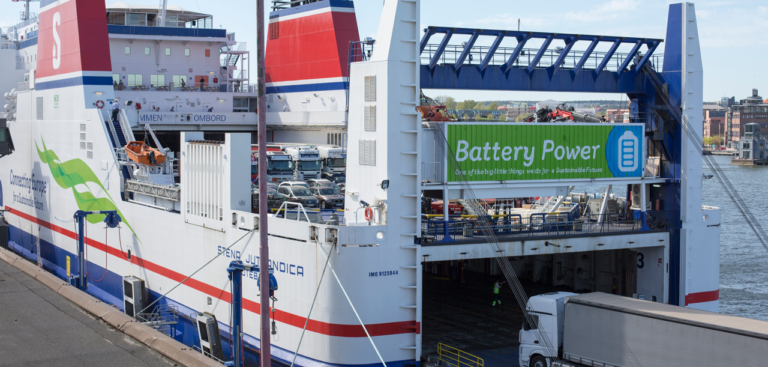The Stena ferry line has begun work on a project to use recycled battery modules in shoreside installations, in order to provide charging infrastructure for future electric ferries. Via a subsidiary of its Stena Recycling Group, Batteryloop, it is undertaking a program to map and evaluate opportunities to reuse lithium-ion batteries from the transport and automotive industry for energy storage in ports. The collaboration includes several Stena companies – Batteryloop, Stena Recycling, Stena Rederi and Stena Line – the ports of Gothenburg and Kiel, and the accreditation company DNV GL.
“An incredible amount is happening in the world of batteries,” explained Rasmus Bergström, managing director of Batteryloop. “New solutions are being designed to meet the charging requirements of the transport sector of the future, especially for shipping, where vessels are starting to switch to electric power. Rapidly charging a large ferry, for example, requires a huge amount of energy in a short time and it’s not certain that the electricity grid will be able to deliver it. Local energy stores at ports could offer a great solution to this problem.
“One thing is sure, batteries are here to stay. In order to conserve natural resources and make battery recycling sustainable, we need to do everything we can to use batteries for as long as possible. Our conclusion is that many batteries can have a second life as energy storage. If we can find solutions that will scale up and work in ports, we’ll have a win-win situation in many ways.”
The project will be carried out over two years and be part-financed by INEA, the EU’s Innovation and Networks Executive Agency. “This is an important milestone in the electrification of shipping,” added Per Wimby, project manager for electrification at Stena Teknik. “Our future project, Stena Elektra – a fully electric ferry – is already on the drawing board. In order to succeed, we need to solve the issue of how to quickly charge a ferry. Energy storage at ports using recycled batteries is a very interesting and sustainable alternative for the future.”



